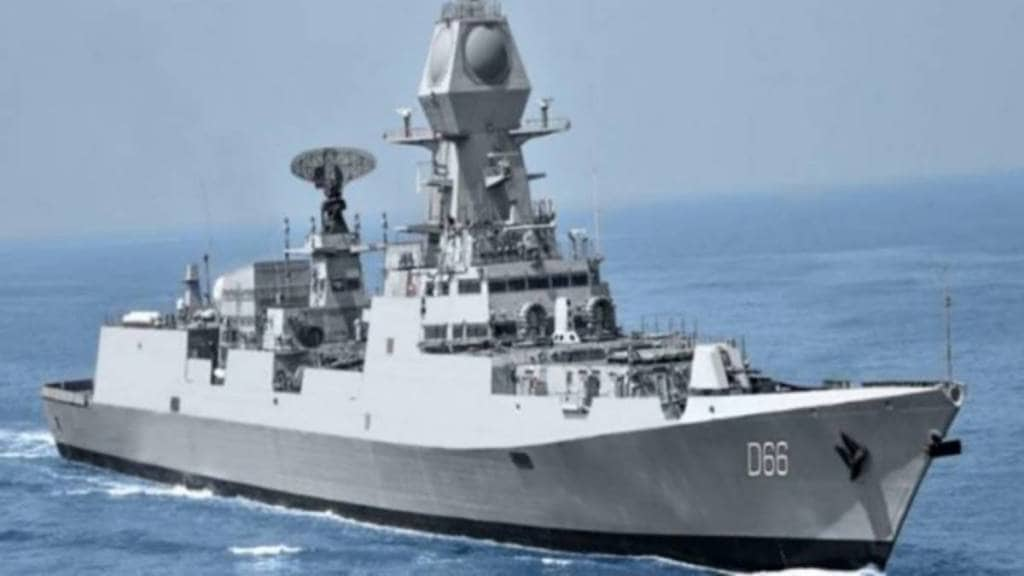The Defence Acquisition Council (DAC), chaired by Defence Minister Rajnath Singh, on September 3, 2024, approved several significant projects, including the Indian Navy’s ambitious Rs 70,000 crore Project 17B. This project involves constructing seven state-of-the-art frigates, which are expected to become the most advanced warships ever built in India. These vessels will play a critical role in enhancing the Indian Navy’s operational capabilities, especially in countering the growing naval presence of China in the Indian Ocean region.
Project 17B: A Strategic Imperative for the Indian Navy
Project 17B represents the continuation and evolution of the Nilgiri-class frigates currently under construction under Project 17A. The new frigates will weigh approximately 8,000 tonnes each and will feature advanced strike capabilities, including indigenous fire control systems, BrahMos cruise missiles, anti-submarine warfare (ASW) weaponry, and sophisticated electronic warfare systems.
The primary contenders for this massive project are Mazagon Dockyards Limited (MDL) and Garden Reach Shipbuilders and Engineers (GRSE), both of which are already engaged in constructing frigates under Project 17A.
MDL, based in Mumbai, is one of India’s most advanced shipyards and has an extensive history of delivering complex naval platforms. The shipyard is currently constructing four Project 17A frigates, along with the Kalvari-class submarines and Project 15B destroyers.
GRSE, based in Kolkata, is another key player in India’s shipbuilding industry, specializing in next-generation offshore patrol vessels and anti-submarine warfare corvettes. GRSE is responsible for constructing three Project 17A frigates and has also secured several export orders, further demonstrating its capabilities.
The Tender Process and Potential Outcomes
The Ministry of Defence (MoD) is expected to decide whether to split the Project 17B order between MDL and GRSE, as was done with Project 17A. This approach would expedite the delivery timelines for the Indian Navy and ensure that the workload is distributed across multiple shipyards, thereby supporting the broader ecosystem of sub-suppliers and vendors involved in these projects. The competitive bidding process will determine which shipyard will be awarded the contract, with the lowest bidder (L1) likely to receive the larger share of the order, potentially four of the seven frigates.
Technological Advancements and Indigenous Content
Project 17B is designed to significantly boost the indigenous content of the Indian Navy’s fleet, in line with the government’s ‘Make in India’ initiative. The new frigates will incorporate a high level of domestically developed technology, including advanced fire control systems, weaponry, and electronic warfare capabilities. The integration of the BrahMos cruise missile system, a joint venture between India and Russia, will further enhance the strike capabilities of these warships, making them a formidable force in the Indian Ocean.
In addition to their offensive capabilities, the frigates will be equipped with advanced anti-submarine warfare systems, crucial for detecting and neutralizing underwater threats. The ships will also feature sophisticated electronic warfare systems designed to protect against a wide range of threats, including missile attacks and electronic jamming.
Countering China’s Naval Expansion
The approval of Project 17B comes at a time of increasing concern over China’s expanding naval presence in the Indian Ocean region. The Chinese People’s Liberation Army (PLA) Navy has been steadily increasing its long-range patrols in the region and has established strategic bases in Pakistan, Sri Lanka, Djibouti, and Cambodia. Additionally, China has shown interest in expanding its influence in Bangladesh, further complicating the security dynamics in the region.
China’s aggressive naval posture has raised alarms across the Asia-Pacific, particularly with its recent actions against Japan and the Philippines. The PLA Navy has been conducting provocative operations in Japan’s Exclusive Economic Zone (EEZ) and has challenged Philippine naval operations in the South China Sea. These actions underscore the urgency for India to bolster its maritime capabilities to maintain a strategic edge in the Indian Ocean.
The advanced frigates under Project 17B will play a pivotal role in countering China’s growing influence in the region. With their enhanced strike capabilities, ASW systems, and electronic warfare technology, these warships will enable the Indian Navy to project power more effectively and respond to any potential threats posed by the PLA Navy. The strategic importance of these frigates cannot be overstated, as they will help safeguard India’s maritime interests and maintain stability in the Indian Ocean region.


